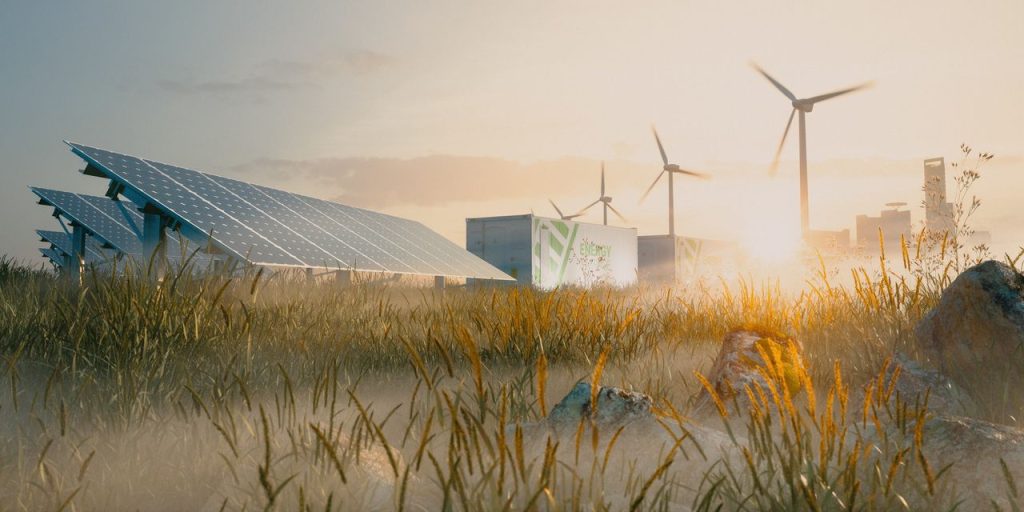The Biden administration is making available nearly $11 billion in grants and loans aimed at helping rural energy and utility providers offer “affordable, reliable clean energy” to their communities, reducing reliance on greenhouse gas-emitting fossil fuels, officials said Tuesday.
Biden officials say the funding, which was part of the Inflation Reduction Act, represents the single largest investment in rural electrification since President Franklin D. Roosevelt signed the Rural Electrification Act into law in 1936.
Many power-sector watchers say an aging and sometimes inefficient electric grid will need reinforcement, as well as energy storage capabilities, to handle the boost in electric use as more Americans drive electric vehicles
TSLA,
swap out gas furnaces for electric, and lean on solar, wind and other alternatives to run the power grid.
“These [rural electric] investments will also combat climate change and significantly reduce air and water pollution that put children’s health at risk,” said Agriculture Secretary Tom Vilsack in announcing USDA’s programs.
Funding will be available through two programs. USDA is bolstering the Powering Affordable Clean Energy (PACE) program. It makes $1 billion available in partially forgivable loans to renewable-energy developers and electric service providers, including municipals, cooperatives and investor-owned and Tribal utilities to help finance large-scale solar, wind, geothermal, biomass, hydropower projects and energy storage in support of renewable energy systems.
In addition, USDA will advance its Empowering Rural America, or New ERA program, which makes $9.7 billion available to eligible rural electric cooperatives to deploy renewable energy systems, as well as zero-emission and carbon capture systems.
Carbon capture promotion also featured in last week’s Environmental Protection Agency proposal seeking the first-ever restrictions on greenhouse gases from existing and new power plants.
For the technology to make a mark, the energy and power industries will have to quickly bring up to scale carbon- and methane-capturing. It’s a nascent field that has champions in both the private and public sector and along the political spectrum. But some environmental groups say it doesn’t do enough to slow demand for fossil fuels at the outset.
Carbon capture, sequestration and storage, or CSS as it’s known, is believed to be used at only a dozen-plus of the nation’s 3,400 coal and gas-fired electricity plants. It’s a different process than other technology currently being tested, which captures emissions not at the point of combustion, but from the air.
Asked if he believed that carbon capture technology was viable in smaller rural markets and likely to attract private-sector interest, USDA’s Vilsack said a combination of incentives could make this technology attractive.
“When you stack benefits like tax credits, investment tax credits, involvement of the infrastructure package, you can offset up to 25% of overall total [project] cost, [and] you can pencil it out to where it makes economic sense,” said Vilsack.
John Podesta, a senior adviser to Biden on clean energy, said “there is every indication industry is interested in this.”
The IRA, with the ag industry in mind, had already provided up to $500 million in grants for infrastructure improvements to blend, store or distribute biofuels. And the IRA’s Rural Energy for America Program (REAP) directed $303 million for ag-based technology. USDA anticipates funds will support renewable energy and energy-efficiency projects for more than 41,500 farms and small businesses.
Broadly speaking, the IRA pushes corporate and individual income tax breaks that benefit both producers and consumers of clean energy products, meant to replace the oil
CL00,
and natural gas
NG00,
that largely powers the U.S. economy, but is responsible for man-made global warming bringing dangerous and expensive weather extremes, rising oceans and more.
Biden has said he is steering the country toward a 100% clean electrical grid by 2035 and reaching net-zero carbon emissions throughout the economy by 2050.
House Republicans in recent weeks have pushed a bill that would rescind many Inflation Reduction Act clean energy tax incentives in exchange for a temporary increase in the federal debt limit. They say the IRA’s clean-energy provisions have gotten more expensive since they were first scored. Republicans have also advanced their own energy initiatives, which tend to include natural gas in a U.S. energy portfolio alongside alternatives like wind, solar, hydrogen and nuclear.
Read: Debt-ceiling standoff: With key meeting expected Tuesday, here’s what could go into a bipartisan deal
Read the full article here




